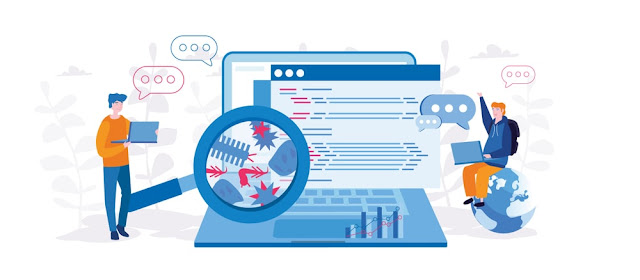What Is Manual Testing? 8 Important Steps Of Manual Testing
Over the last three decades, the technological sector has experienced massive growth. When computers were first introduced in the 1960s, they weighed more than a ton and had to be housed in special rooms. Today's compact computers have thousands of times more memory, far greater processing power, and connect with other devices through complex networks. The development of applications and software is a major factor in the technological revolution that has transformed business and personal communication.
The software may look simple and easy, but it's a complex process. Multiple steps are involved in its creation, including planning, analysis, design, development, manual testing, and maintenance. These steps are equally important, but manual testing is particularly crucial.
What is Manual Testing?
Manual testing is a crucial part of creating software. Unlike other steps in the software development process, manual testing overlooks and checks for the proper operation of all software features. It also suggests better alternatives for features that do not work as expected.
Manual testing is performed by a manual testing expert who uses the software like an end-user. The manual testing expert then analyzes and highlights the problems an end-user might encounter while using the software. These problems are then fixed, thus making the software free from defects.
8 Important Steps Of Manual Testing
Manual testing is a labor-intensive process requiring a human being to test the same part of an application repeatedly. During the whole process, testers repeatedly go through different parts of the software with the end goal of making the whole software run smoothly and providing the end-user with a nice experience. Thus, making manual testing a long and time-consuming process.
1. Requirement gathering
The first step of software testing, requirement gathering, is vital to the success of an application. To properly execute this step, testers must first understand the developers' intent and then gather all available information. This includes studying the business model behind the software and conducting interviews with company representatives.
2. Sharing and discussing
Requirement gathering leaves the tester with a lot of unassembled information. In this stage, the 'sharing and discussion' part comes into play, as manual testers compile and categorize the information they have gathered to be useful to them in future stages.
In this stage, testers try to understand the working and the idea behind the software completely. With this stage performed correctly, testers have a visualization or a mind map of the testing they will perform.
3. Setting up resources and environment
After all the necessary information is gathered and the testing stage is visualized, testers work on gathering all the necessary resources they will need to make their testing run smoothly. These resources include people, hardware, software, and anything else that might be required for a successful test run.
This step also requires the creation of a well-set-up testing environment to help ensure that products are going through standardized testing.
4. Creating / Writing test scenarios and cases
Test environments should be created to support testing activities and allow testers to create a detailed map of the testing stage. Testers can better understand how it will work in real-world situations when using the product as an end-user.
Before a product is launched, it is thoroughly tested by people other than the programmers who developed it. The testers try to create problems that end-users might encounter while using the product. They then note these problems and create a long list of scenarios and test cases. These test cases answer questions such as 'How to test?', 'When to test?' etc.
5. Testing stage
Product testing is performed by verifying a product's usability, efficiency, and stability. Testers begin testing with a thorough understanding of how the product works. They then use the product as intended to be used and look for discrepancies between what the user experience should be and what it is.
When a case or scenario performs poorly, it is marked as a failure and reported to the developers.
6. Finding and reporting defects
When a test case fails, it is reported to software developers and further analyzed to identify the defects that caused the test case to fail. Those defects are then reported to the developers who work on fixing them.
After each defect is fixed, the tester retests the product and marks it as passed. The 'finding and reporting defects' process can be time-consuming until all defects are fixed, and all cases are passed.
7. Feedback and recommendations
The testing team passes each case to the next person on the team, who then creates a final report for stakeholders. Before creating a final report, testers create a draft they review with other team members. It allows them to identify any mistakes before submitting the final report.
8. Product release
Once the product has been successfully tested, the final version is sent to the owner for approval. The owner then decides on a release date and time for the product.





No comments:
Post a Comment